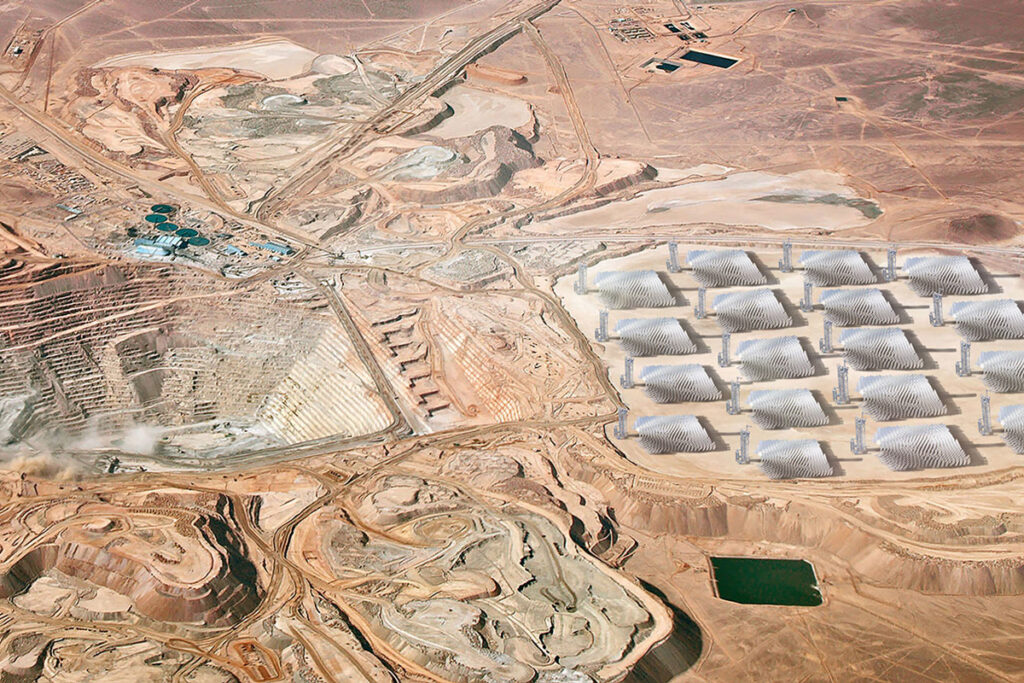ENERGY TRANSITION WILL TRANSFORM MINING

IStock
Energy research and consulting firm Wood Mackenzie projects that both production costs and commodity prices will rise significantly for “transition” metals in the coming years. Writing in Forbes, WoodMac’s authors say that this will present obvious risks, but also significant margin opportunities and competitive advantages for miners that anticipate and prepare for the impending changes.
They write, “By 2050 the energy transition could see nickel (Ni) demand triple, copper (Cu) demand more than double, and demand for Lithium chemicals grow 700%. The burden on miners of transition metals will be immense and the industry will be transformed as investors scramble to deliver the necessary metal.”
“For battery raw materials in particular,” the authors suggest, “there will be a reliance on deposits that are as yet undefined.” For example, “There is plenty of uncertainty around the costs of extraction at known Lithium projects, let alone the millions of tonnes of Lithium required from unexplored sources, some of which will rely on untested technologies.”
They continue, “Add in the likelihood of global carbon prices and you can understand why long-term pricing for Lithium and other energy transition metals is the subject of fierce debate.”
Current costs unsustainable
Staying with their lithium example, the authors identify three factors they expect will make current cost structures unsustainable.
- “Firstly, grade is declining in mineral deposits as existing higher-grade ore bodies are extracted and new market conditions allow for the evaluation and development of lower-grade deposits.
- “Secondly, the greater reliance on lepidolite sources in the future means higher concentrating and chemical conversion costs. The structural complexity of lepidolites leads to generally lower lithium content and higher proportions of impurities.
- “Thirdly, in addition to new nearer term mineral sources, a reliance on clay and even longer term – seawater sources – are likely, meaning the application of nascent technologies from extremely low-grade deposits which will bring with them additional complexity and technical challenges, resulting in greater cost.”
Pressure on other inputs
The authors also see upward pressure on both inputs and operating costs. “[C]ompetition for labour, equipment and raw materials will see capital and opex costs continue their ascent, particularly while demand growth rates are high … More expensive debt and equity, and higher disruption rates are to be expected.”
Thus, “Notwithstanding the potential for technology savings in the long term, based on what we know about existing operations, it is reasonable to assume the costs of future projects will rise considerably over time.”
Carbon pricing looms
“The advent of carbon pricing,” they continue, “has the potential to accelerate cost increases for Lithium producers,” and by implication, for most other miners. “Carbon pricing regimes are going to be a fact of life for the foreseeable future. Whether a global scheme ultimately prevails is open to argument, but most miners and processors will have to either decarbonise or pay for the privilege to emit greenhouse gases.”
What’s the upside? “Higher marginal costs,” the authors assert, “will typically mean higher prices on average, and this will be true of all commodities until decarbonisation of supply reaches maturity, when the effects of carbon costs will diminish. In the meantime, early movers may enjoy some margin growth as they move down the cost curve.”
They conclude, “The energy transition offers a bright future for all transition metals. Suppliers of lithium, nickel and cobalt, copper and aluminium will be under pressure to meet the needs of the transport and power sectors while decarbonising their own operations. Financiers and governments face the same pressure as enablers of change. Some reticence is understandable given the technology and policy uncertainty. But ‘fortune favours the brave’ is an adage perfectly suited to those suppliers willing to accelerate mine development and their decarbonisation targets. As cost curves grow and steepen, those miners and processors should be rewarded through higher margins.
Read the full article here.
A ROUND-THE-CLOCK CLEAN ALTERNATIVE TO FOSSIL FUELS
Modular, scalable 247Solar Plants
Achieving high levels of renewable energy is particularly challenging for off-grid mines in remote locations because intermittent PV or wind with costly batteries still require dirty, expensive diesel for backup. Many mines also require high-grade heat for on-site processing and other uses. 247Solar offers the only renewable energy technologies that:
- Integrate seamlessly with PV or wind to provide 24/7 dispatchable baseload power
- Provide industrial grade heat up to 970 ℃ (1800 ℉) for ore processing, steam generation and other applications
- Provide their own backup by burning almost any locally available fuel to produce power even when storage is depleted, eliminating gensets and reducing fuel costs up to 80%
Get in touch to learn more
U.S. FIRM USES NANOTECH AND AI TO EXTRACT LITHIUM
Mining.com reports that Aether, an American biotech startup, “has raised $49 million to scale its AI and machine learning-based platform aimed at helping miners extract critical metals in a more resource-efficient and sustainable manner.”
While the company intends to focus first on lithium, it claims its technology can help mine rare earth metals, titanium, and other critical minerals from previously-inaccessible reserves.
Current lithium extraction techniques like open-pit mining or evaporation ponds, require high lithium concentrations to be commercially viable and also use vast amounts of land and water.
Aether’s platform “combines high-throughput robotics, machine learning, and synthetic biology to map millions of enzyme-reaction combinations.” The resulting ‘molecular assemblers’ can be introduced to a brine where they bond only to specified metal atoms releasing the element into a new solution.
By utilizing molecular assemblers, Aether says its technology can extract lithium from previously untapped sources, using 50,000x less water than the amounts required in evaporation ponds.
Aether says its process also eliminates the need for costly infrastructure, relying instead on portable, modular, shipping containers where the extraction and refinery occurs — making efficient on-site processing an attractive option.
Read more here.
SOUTH AFRICAN COAL MINER SAYS DECARBONIZATION IS URGENT

Exxaro
In an earnings call reported by Mining Weekly, Dr Nombasa Tsengwa, CEO of South African coal mining and energy company Exxaro, said that “decarbonization of her company’s operations and entire value chain is an urgent imperative,” to not only reduce carbon dioxide emissions, but also to realize the additional benefits of avoiding market barriers, fines and the loss of social licence to operate.
“By accelerating our decarbonisation plan,” Tsengwa said, “we can also realise cost savings, partnership opportunities and favourable financing terms.”
Decarbonisation is described as being central to the strategy of the company. Though it continues to produce coal, the company seeks to contribute ‘meaningfully’ to the energy transition, through its own renewable energy generation business, as well as the production of critical transition minerals such as copper, manganese and bauxite.
FOLLOW & JOIN 247Solar
LinkedIn US, LinkedinEU, Twitter, YouTube
Contact: info@247solar.com
